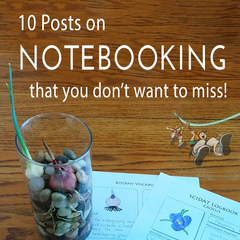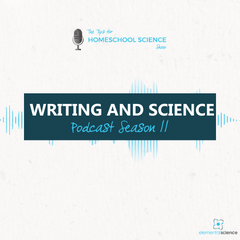Today, we are going to look closer at Essential #2 – Gathering Information.
WHY DO YOU NEED TO GATHER INFORMATION?
Science is more than experiments, there are principles that the students also need to know. At its core, science is a combination of facts and applications.
We need to teach our students the facts that have been proven to be true. We also need to provide them with an awareness of the theories that scientists are still studying.
As we gradually build their knowledge base over time, we provide the students with a knowledge base for further discovery.
So, year by year we want to be feeding our students with age-appropriate facts.
WHAT CAN YOU USE TO GATHER INFORMATION WITH YOUR STUDENTS?
There are lots of resources out there to help you present the facts and theories of science. You can use:
- Science-focused living books – Here is a list of living books group by age.
- Age-appropriate encyclopedias – Here is a list of science encyclopedias grouped by subject and age.
- Standard textbooks – We use publishers like Prentice Hall and Miller & Levine when teaching our high school courses.
- Current Events Articles – One of my go-to sources for these is Science News for Students .
- YouTube Videos – You can search for subject specific videos or subscribe to certain channels, like NASA,Ted-Ed, and ACS Reactions , for weekly updates.
I recommend you read to your students or have the students read about science at least twice a week during the school year.
The resources you use will depend on your students’ learning styles and your teaching preferences.
- Some will prefer to read just the facts – textbooks, articles, and encyclopedias will fit the bill here.
- Some will prefer a bit of excitement as they learn – living books, current events articles, and videos are a great option for this.
- Some will prefer a more visual presentation – encyclopedias, videos, and library books will all work in this case.
In the early years, you will read to your children. As their reading skills increase, have your students read more and more one their own. (Note—It is completely acceptable to keep the resources you use just below their reading level so that they can focus on the facts they are learning rather than the task of reading.)
HOW TO SUCCEED WITH GATHERING INFORMATION
Tip # 1 – Choose the resources that interest your children. Textbooks may make some groan but know of a student who slept with her textbook under her pillow at night. Be sure to select resources that will hold the interest of your students.
Tip # 2 – Always orally discuss what the students have read. Discussing the material will help the students to assimilate the facts into their memory banks. It will also help to clear up any confusion they may have about the subject.
I trust that you now have a better picture of what the second key to your science plan is and how you can use this key with your students.
If you have any questions, head on over to Facebook or Google+and join the conversation.
This article was written by our author, Paige Hudson. You can also find her mixing up solutions for homeschool science at Elemental Blogging . If you want to receive more articles just like this, plus our monthly discounts, sign up for our newsletter in the box below or click here.
Need help with planning the informational aspect of homeschool science? Come see how we can help!


